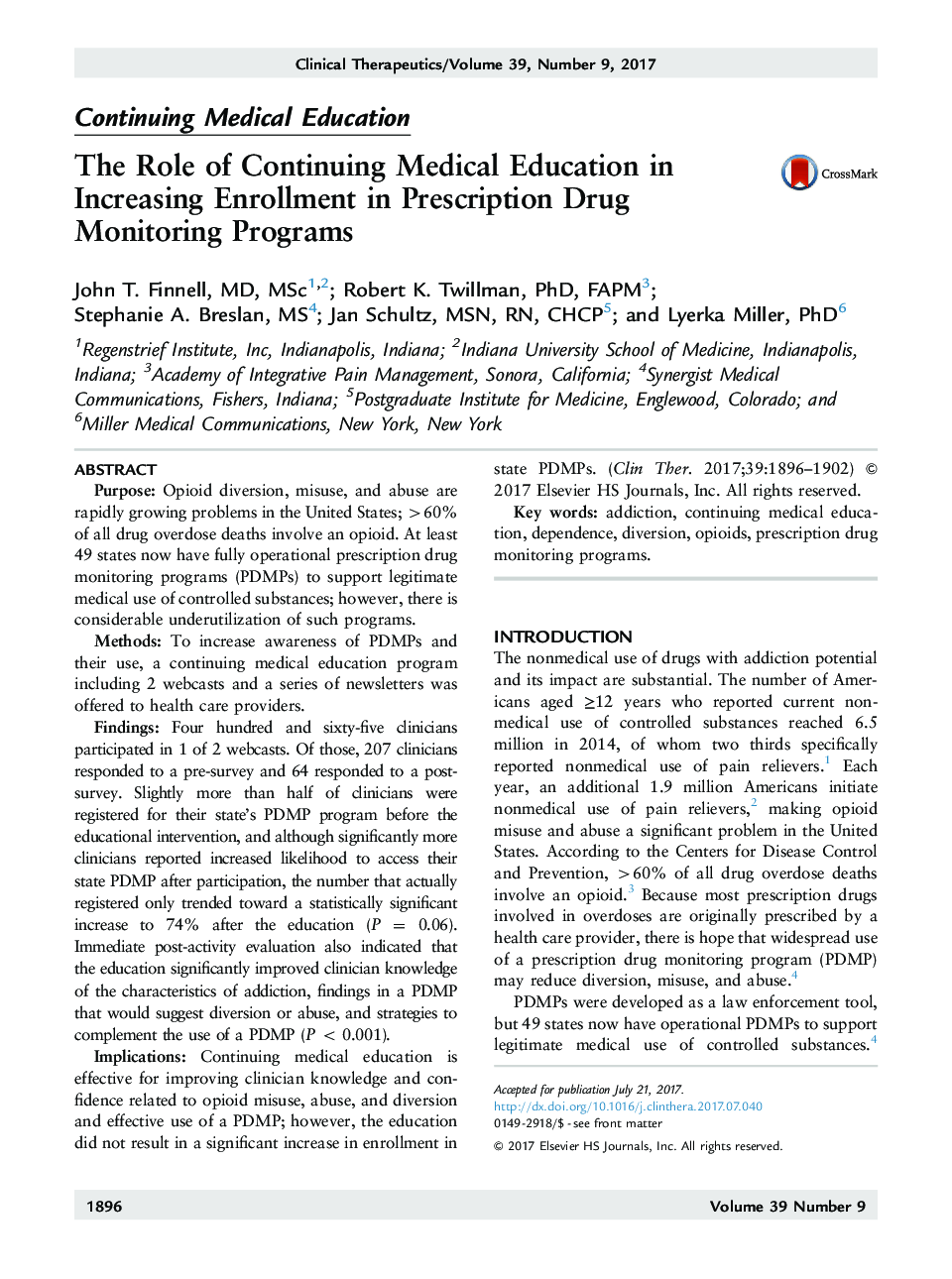| Article ID | Journal | Published Year | Pages | File Type |
|---|---|---|---|---|
| 5553704 | Clinical Therapeutics | 2017 | 9 Pages |
PurposeOpioid diversion, misuse, and abuse are rapidly growing problems in the United States; >60% of all drug overdose deaths involve an opioid. At least 49 states now have fully operational prescription drug monitoring programs (PDMPs) to support legitimate medical use of controlled substances; however, there is considerable underutilization of such programs.MethodsTo increase awareness of PDMPs and their use, a continuing medical education program including 2 webcasts and a series of newsletters was offered to health care providers.FindingsFour hundred and sixty-five clinicians participated in 1 of 2 webcasts. Of those, 207 clinicians responded to a pre-survey and 64 responded to a post-survey. Slightly more than half of clinicians were registered for their state's PDMP program before the educational intervention, and although significantly more clinicians reported increased likelihood to access their state PDMP after participation, the number that actually registered only trended toward a statistically significant increase to 74% after the education (P = 0.06). Immediate post-activity evaluation also indicated that the education significantly improved clinician knowledge of the characteristics of addiction, findings in a PDMP that would suggest diversion or abuse, and strategies to complement the use of a PDMP (P < 0.001).ImplicationsContinuing medical education is effective for improving clinician knowledge and confidence related to opioid misuse, abuse, and diversion and effective use of a PDMP; however, the education did not result in a significant increase in enrollment in state PDMPs.
